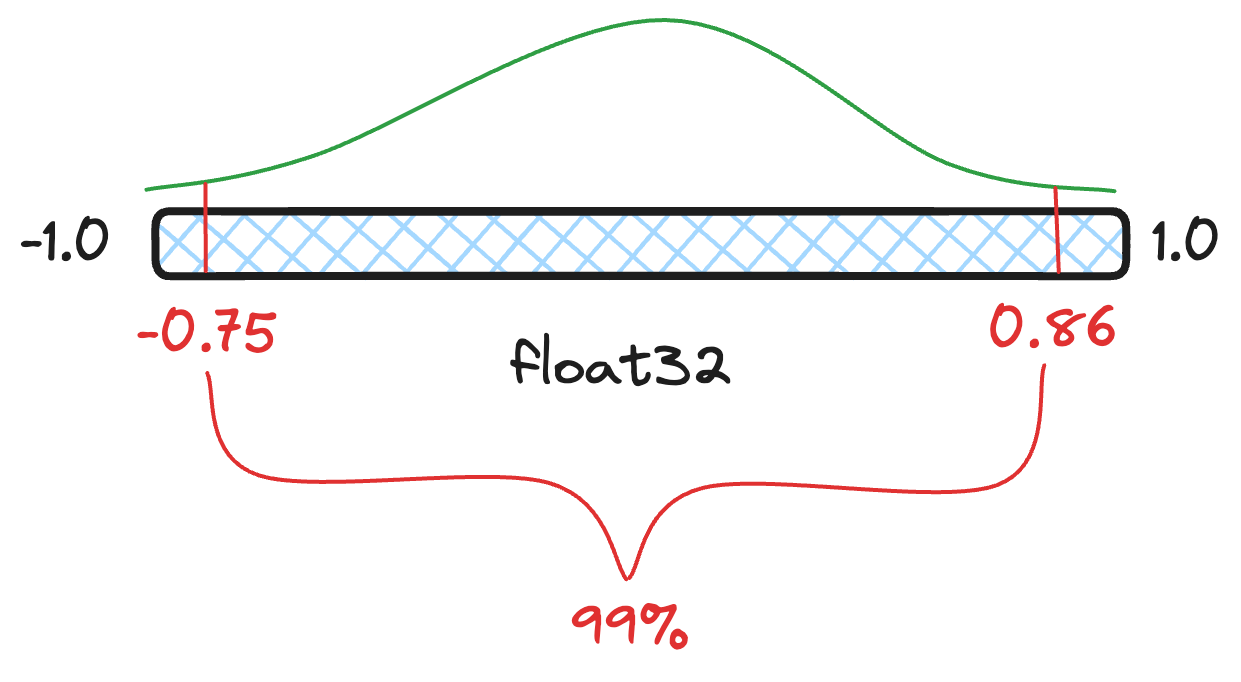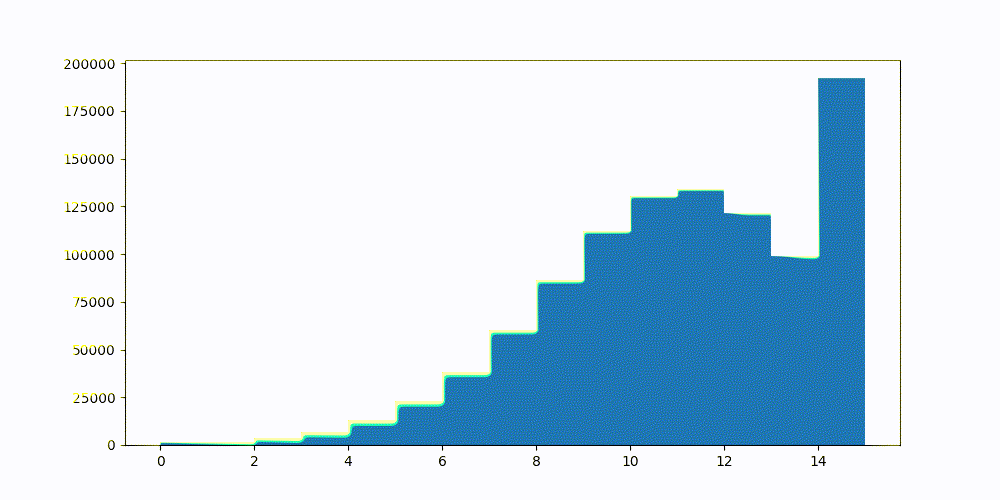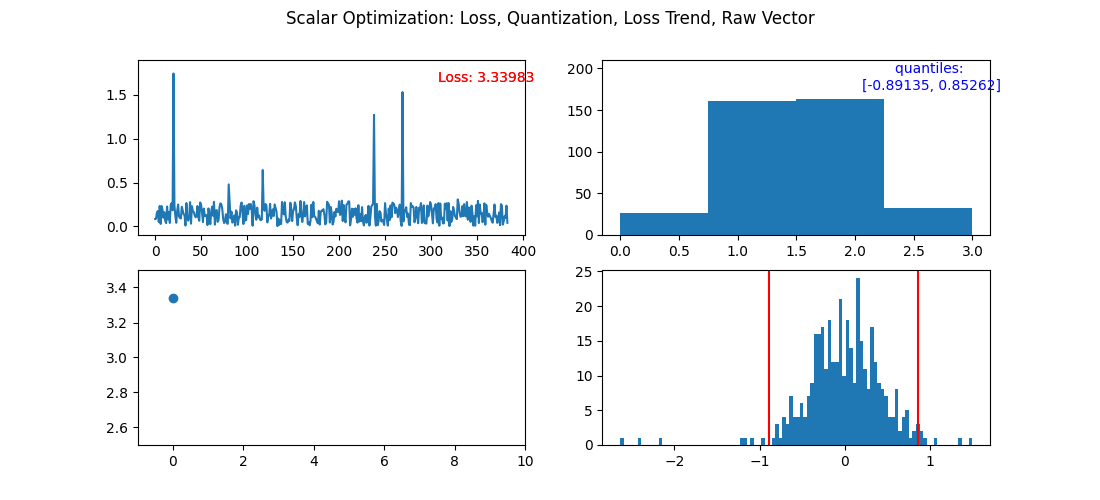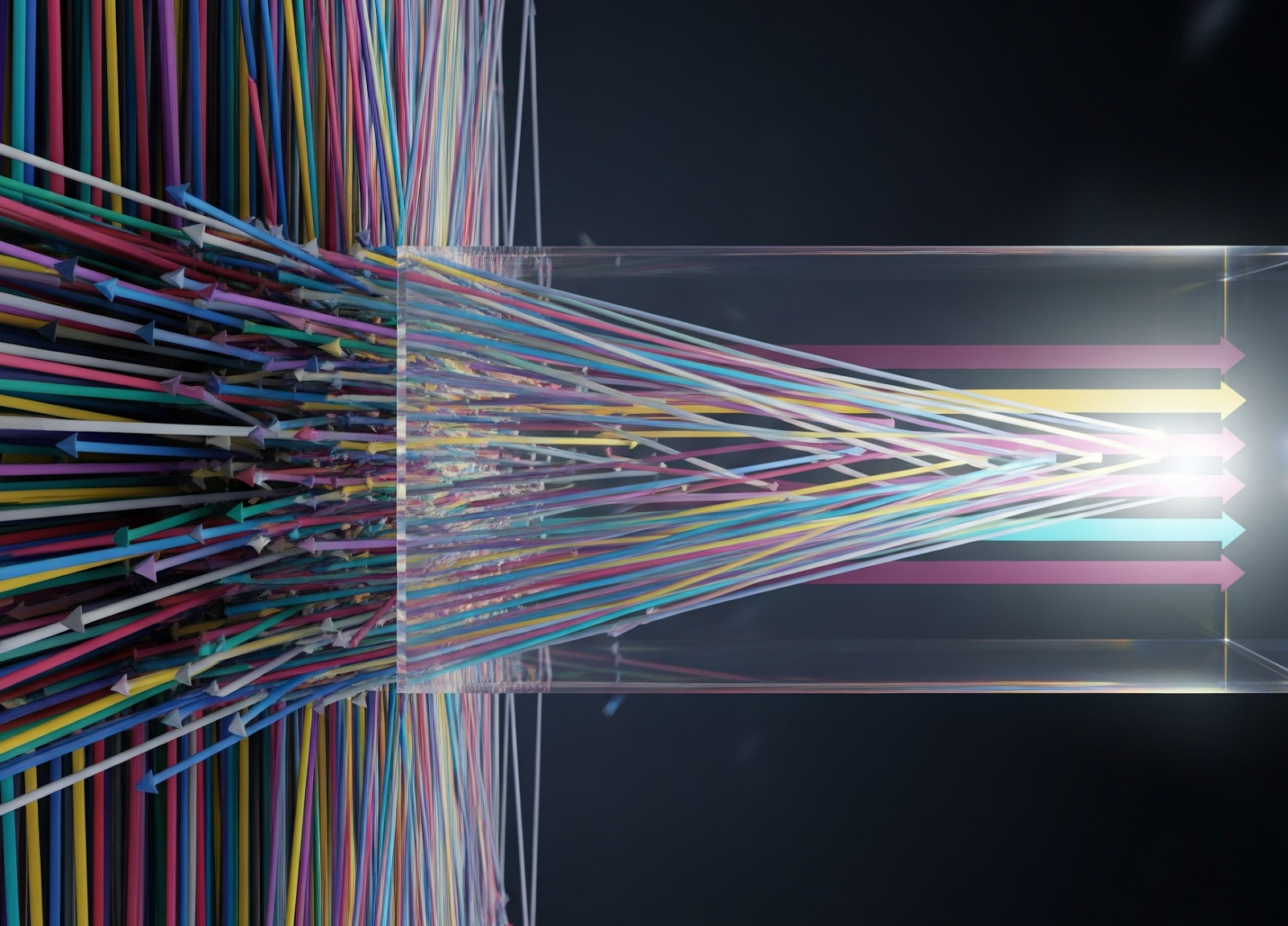Our Better Binary Quantization (BBQ) indices are now even better(er). Recall improvements across the board (in extreme cases up to 20%) and unlocking the future of quantizing vectors to any bit size. As of Elasticsearch 8.18, BBQ indices are now backed by our state of the art optimized scalar quantization algorithm.
Scalar quantization history
Introduced in Elasticsearch 8.12, scalar quantization was initially a simple min/max quantization scheme. Per lucene segment, we would find the global quantile values for a given confidence interval. These quantiles are then used as the minimum and maximum to quantize all the vectors. While this naive quantization is powerful, it only really works for whole byte quantization.

Static confidence intervals mean static quantiles. This is calculated once for all vectors in a given segment and works well for higher bit values.
In Elasticsearch 8.15, we added half-byte, or int4, quantization. To achieve this with high recall, we added an optimization step, allowing for the best quantiles to be calculated dynamically. Meaning, no more static confidence intervals. Lucene will calculate the best global upper and lower quantiles for each segment. Achieving 8x reduction in memory utilization over float32 vectors.

Dynamically searching for the best quantiles to reduce the vector similarity error. This was done once, globally, over a sample set of the vectors and applied to all.
Finally, now in 8.18, we have added locally optimized scalar quantization. It optimizes quantiles per individual vector. Allowing for exceptional recall at any bit size, even single bit quantization.
What is Optimized Scalar Quantization?
For an in-depth explanation of the math and intuition behind optimized scalar quantization, check out our blog post on Optimized Scalar Quantization. There are three main takeaways from this work:
- Each vector, is centered on the Apache Lucene segment's centroid. This allows us to make better use of the possible quantized vectors to represent the dataset as a whole.
- Every vector is individually quantized with a unique set of optimized quantiles.
- Asymmetric quantization is used allowing for higher recall with the same memory footprint.
In short, when quantizing each vector:
- We center the vector on the centroid
- Compute a limited number of iterations to find the optimal quantiles. Stopping early if the quantiles are unchanged or the error (loss) increases
- Pack the resulting quantized vectors
- Store the packed vector, its quantiles, the sum of its components, and an extra error correction term

Here is a step by step view of optimizing 2 bit vectors. After the fourth iteration, we would normally stop the optimization process as the error (loss) increased. The first cell is each individual components error. The second is the distribution of 2 bit quantized vectors. Third is how the overall error is changing. Fourth is current step's quantiles overlayed of the raw vector being quantized.
Storage and retrieval of optimized scalar quantization
The storage and retrieval of optimized scalar quantization vectors are similar to BBQ. The main difference is the particular values we store.

Stored for every binary quantized vector: dims/8 bytes, upper and lower quantiles, an additional correction term, the sum of the quantized components.
One piece of nuance is the correction term. For Euclidean distance, we store the squared norm of the centered vector. For dot product we store the dot product between the centroid and the uncentered vector.
Performance
Enough talk. Here are the results from four datasets.
- Cohere's 768 dimensioned multi-lingual embeddings. This is a well distributed inner-product dataset.
- Cohere's 1024 dimensioned multi-lingual embeddings. This embedding model is well optimized for quantization.
- E5-Small-v2 quantized over the quora dataset. This model typically does poorly with binary quantization.
- GIST-1M dataset. This scientific dataset opens some interesting edge cases for inner-product and quantization.
Here are the results for Recall@10|50
| Dataset | BBQ | BBQ with OSQ | Improvement |
|---|---|---|---|
| Cohere 768 | 0.933 | 0.938 | 0.5% |
| Cohere 1024 | 0.932 | 0.945 | 1.3% |
| E5-Small-v2 | 0.972 | 0.975 | 0.3% |
| GIST-1M | 0.740 | 0.989 | 24.9% |
Across the board, we see that BBQ backed by our new optimized scalar quantization improves recall, and dramatically so for the GIST-1M dataset.
But, what about indexing times? Surely all this per vector optimizations must add up. The answer is no.
Here are the indexing times for the same datasets.
| Dataset | BBQ | BBQ with OSQ | Difference |
|---|---|---|---|
| Cohere 768 | 368.62s | 372.95s | +1% |
| Cohere 1024 | 307.09s | 314.08s | +2% |
| E5-Small-v2 | 227.37s | 229.83s | < +1% |
| GIST-1M | 1300.03s* | 297.13s | -300% |
- Since the quantization methodology works so poorly over GIST-1M when using inner-product, it takes an exceptionally long time to build the HNSW graph as the vector distances are not well distinguished.
Conclusion
Not only does this new, state of the art quantization methodology improve recall for our BBQ indices, it unlocks future optimizations. We can now quantize vectors to any bit size and we want to explore how to provide 2 bit quantization, striking a balance between memory utilization and recall with no reranking.
Ready to try this out on your own? Start a free trial.
Elasticsearch and Lucene offer strong vector database and search capabilities. Dive into our sample notebooks to learn more.
Related content

September 3, 2025
Vector search filtering: Keep it relevant
Performing vector search to find the most similar results to a query is not enough. Filtering is often needed to narrow down search results. This article explains how filtering works for vector search in Elasticsearch and Apache Lucene.

April 7, 2025
Speeding up merging of HNSW graphs
Explore the work we’ve been doing to reduce the overhead of building multiple HNSW graphs, particularly reducing the cost of merging graphs.

April 7, 2025
Speeding up HNSW graph merge
We describe a new strategy we developed that reduces HNSW merge time by up to 70% whilst maintaining similar graph quality

February 27, 2025
Filtered HNSW search, fast mode
Explore the improvements we have made for HNSW vector search in Apache Lucene through our ACORN-1 algorithm implementation.

February 7, 2025
Concurrency bugs in Lucene: How to fix optimistic concurrency failures
Thanks to Fray, a deterministic concurrency testing framework from CMU’s PASTA Lab, we tracked down a tricky Lucene bug and squashed it